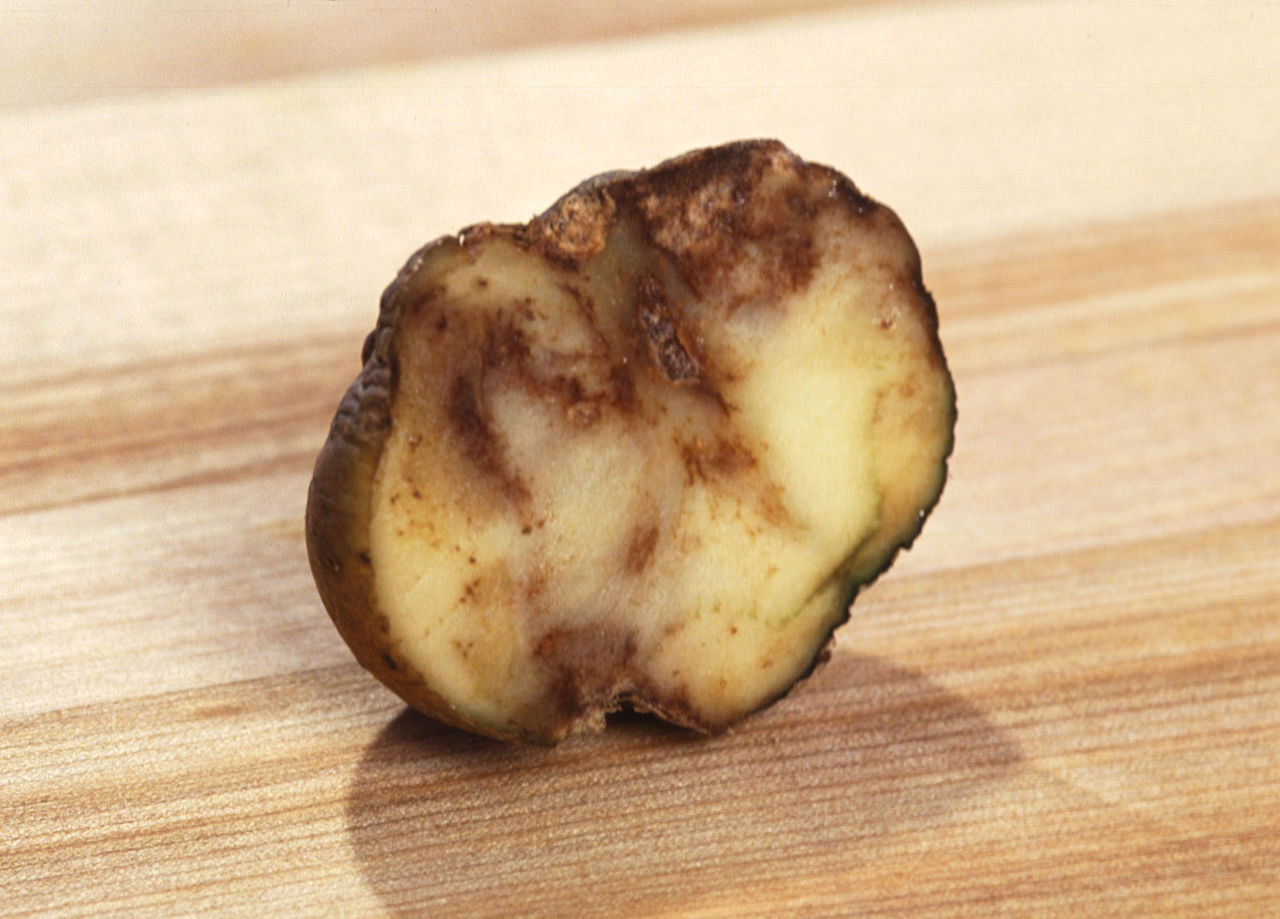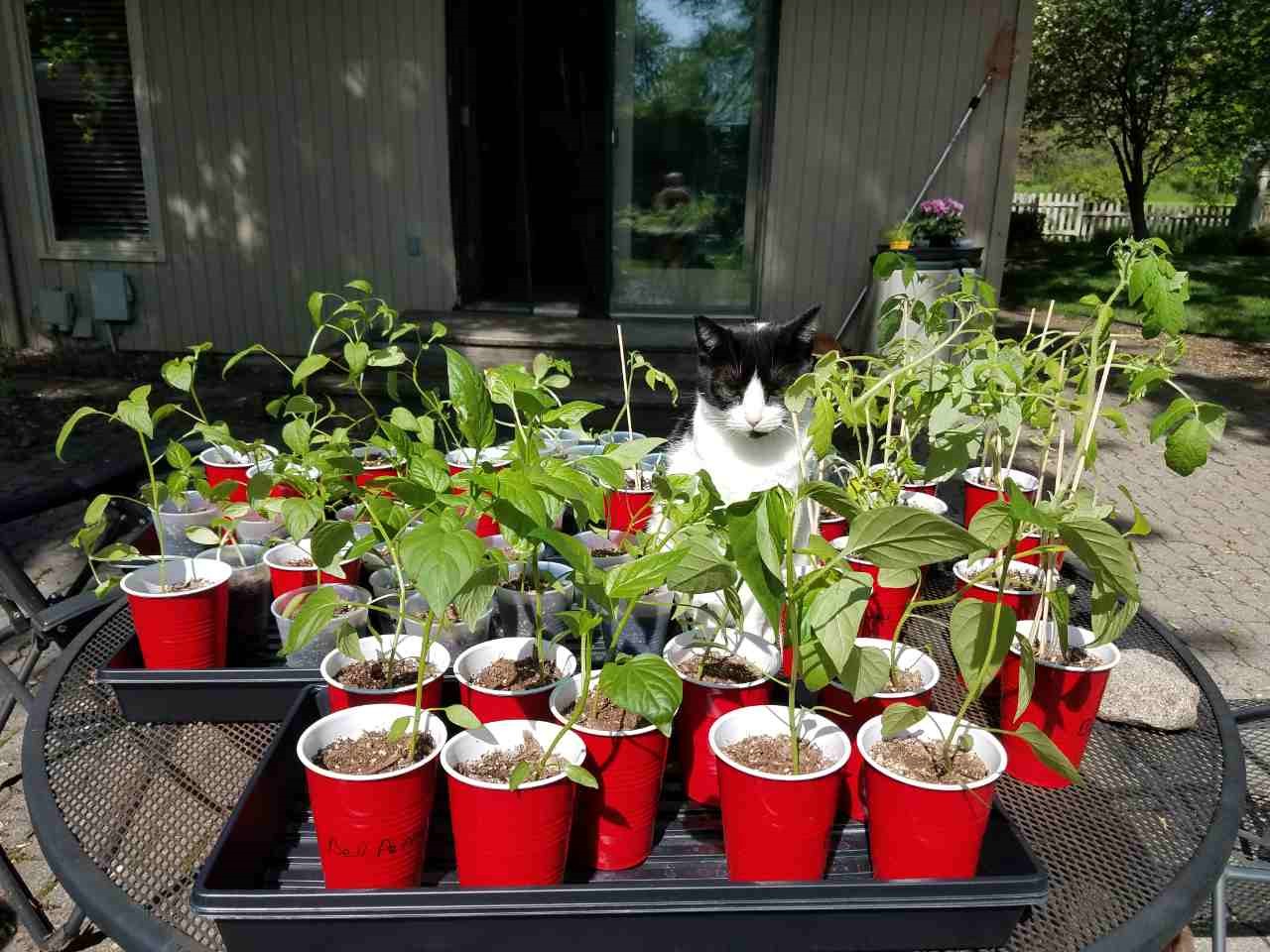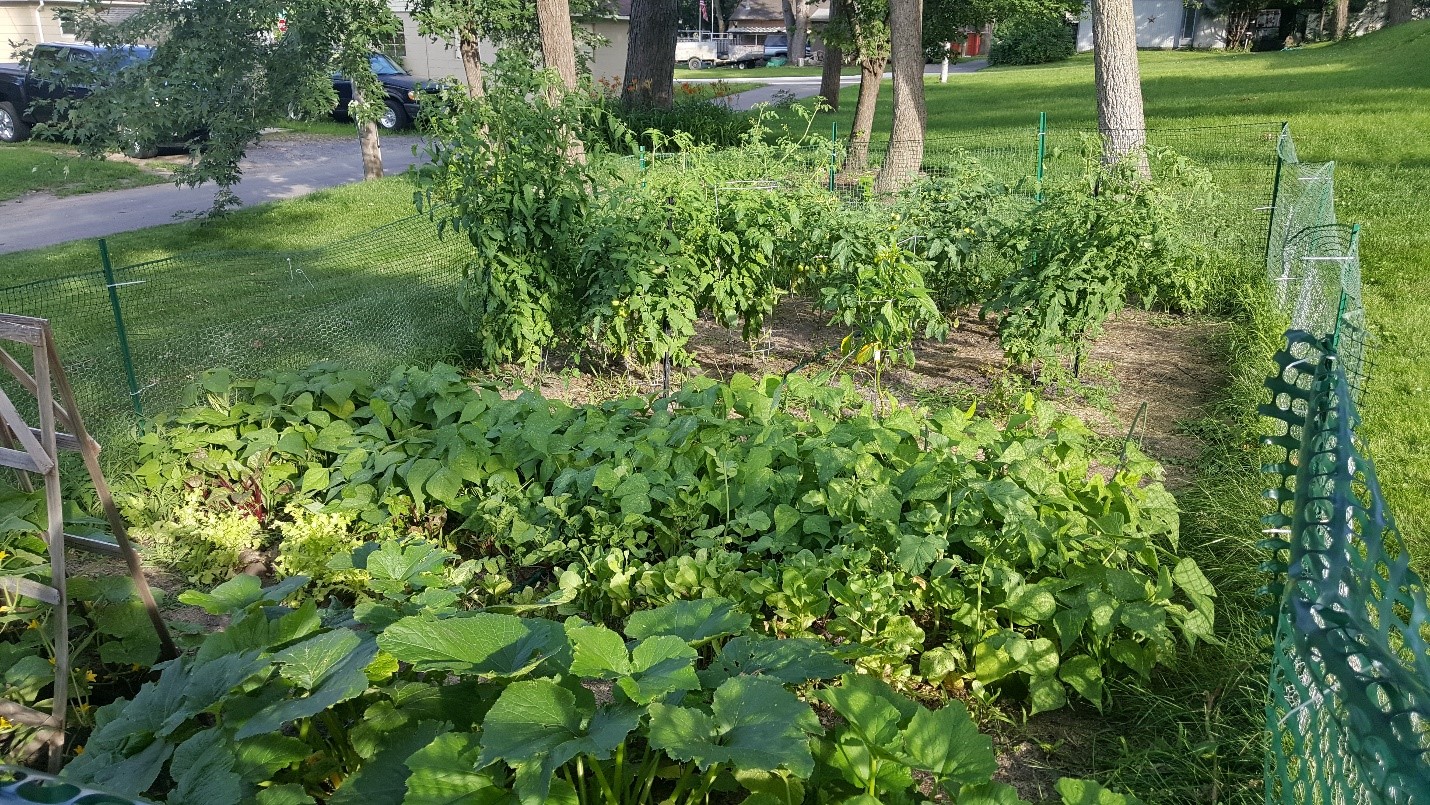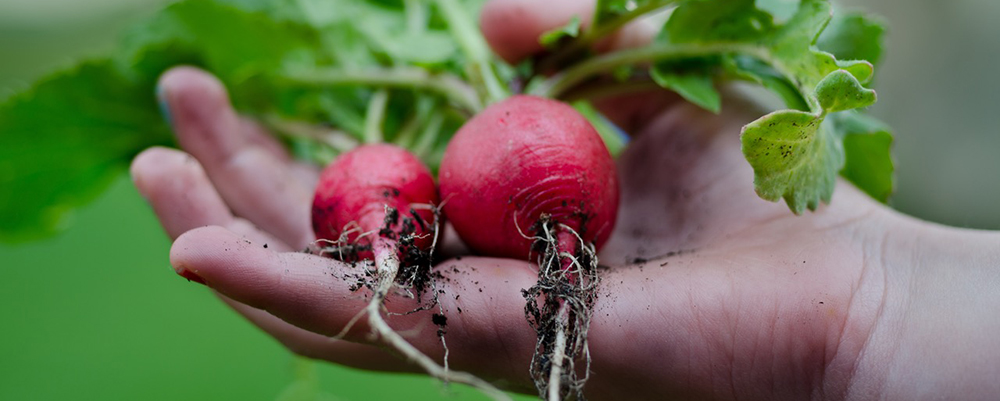Plants and microbes have a love-hate relationship (I have a similar feeling when a long Minnesota winter causes me to delay planting my garden). There are many types of microorganisms that emerge in the spring and summer when we begin to plant our gardens. Some microorganisms have great benefits while others cause harm to plants and gardeners.
The Good
Beneficial microbes improve seed germination rate, root development, fruit yield, nutrient uptake and even protect from plant pathogens. These microorganisms are referred to as Plant Growth Promoting Rhizobacteria – or PGPRs. This group includes: Rhizobium, Azospirillium, Psuedomonas, Flavobacterium, Arthrobacter and Bacillus. Below are few descriptions of PGRPs and how they help plants.
Bradyrhizobium japonicum
Bradyhizobium japonicm is a Gram-negative, nitrogen-fixing bacterium that has a symbiotic relationship with soybeans – specifically the Glycine max species.
B. japonicum works with soybean plants to create special nodules on the roots. The nodules provide a physical barrier that keeps free oxygen low while allowing the bacteria to assist in nitrogen fixation. Additional assistance from B. japonicum is significant because it takes about five pounds of nitrogen to produce one bushel of soybeans.
Bacillus sp. and Streptomyces sp.
Bacillus sp. and Streptomyces sp. grow near a plant’s roots. The strains release secondary metabolites that inhibit the growth of pathogens that cause plant cells to be “leaky.”
Bacillus pumilus
Bacillus pumilus provides extra protection to Mung bean plants:
- The strain carries a set of antibiotic resistance genes that inhibit plant pathogens
- Mung bean plants package the helpful bacteria in their seeds. B. pumilus can even be detected after sterilization of the seed.
The Bad
Unfortunately, not all microorganisms in soil are good for your plants. Many plants are susceptible to fungal disease that either kill the plant or severely reduce the amount of fruit it produces. I still have nightmares about the summer of 2015 when my tomato plants were covered in blight due to abnormally hot and humid weather (sadly resulting in fewer bacon, lettuce and tomato sandwiches). Below are common garden pathogens caused by bacteria and fungi.

Potato infected with late blight
Late Tomato Blight
Late Tomato Blight is caused by the oomycete, Phytophthora infestans (also called water mold). This disease affects all part of the plant in a devastating fashion, and can result in crop failure if not treated.
- Spreads in moist, cool, damp weather (wet summers and cool nights around 60° -70° F/16° – 21° C).
- Presents as large, dark brown blotches and dried brown leaves. Dark circular spots will cover large fruit and cause them to become mushy as a secondary bacteria invades.
- Can also infect potatoes. P. infestans caused the Irish Potato famine.
- Can be stopped by a change in weather. Prolonged hot, dry days will stop its spread. Using a fungicide prior to the infection will also help to inhibit the formation of this fungus. Programs to forecast potential for disease so proper applications of fungicide and other preventative measures can take place have been developed (e.g. NEWA Tomato Disease Forecast).
Anthracnose Fruit Rot
- Anthracnose fruit rot is caused by Colletotrichum acutatum.
- This disease causes pink and red fruit (such as strawberries and tomatoes) to develop light-brown lesions that will eventually turn dark and appear sunken. Eventually the fruit will dry and shrivel like a little fruit mummy.
- C. acutatum is usually introduced by an infected plant – it is not airborne. Spores are spread by splashing water. Gardeners can prevent the spread of C. acutatum by watering plants at ground level.
- Fungicides with copper, captan or Bacillus subtilis can also provide protection.
General Leaf Diseases Caused by Erwinia, Xanthomonas and Pseduomonas in Foliage Plants
- Symptoms include tip burns, leaf spots, blights, rots, wilts or total collapse of the plant.
- Plants such as Pothos and Fiddleleaf Philodendron are susceptible to Bacterial Leaf Spot caused by Pseudomonas (e.g. P. chichorii).
- Leaf Blight is typically caused by Xanthomonas – susceptible plants include Chinese Evergreens (Aglanoema spp.).
- Leaf diseases can be prevented by giving the plant proper light and water, avoiding crowding, fertilizing every 8-12 weeks and repotting every year into fresh soil
The Ugly

The author’s family cat protecting pepper and tomato plants waiting to be transplanted
Don’t forget about microorganisms lying in wait for sandal and barefoot season. As you’re walking on your lawn and garden this summer, be aware of soil-transmitted helminths. These guys are not like friendly earth worms digesting dead plant material into usable nutrients. Soil-transmitted helminths are intestinal worms that can cause serious illness. You can be exposed by eating produce grown in a contaminated garden, or infected by mature worms penetrating your skin. Be on the lookout for these nasty worms:
Ascaris, Whipworm, and Hookworms
Infections occur when eggs are ingested through food or hands soiled with contaminated dirt. Be sure to properly wash your hands after gardening and wash, cook or peel your fruit and vegetables.
Toxoplasma gondii
You can pick up Toxoplasma gondii from soil if a friendly neighborhood cat decides to use your garden as a litter box. An unpleasant side effect of a garden free of pests like rabbits, voles and moles!
Spring and summer bring a diverse microbial world to our gardens. Don’t let the bad ones put a damper on your fun outdoor activities! Most of the unsavory critters can be avoided by properly washing your hands and produce from the garden as well as wearing protective footwear. Do these simple things and you’ll stay safe while enjoying all the delicious benefits of the good bacteria helping your produce grow.

The author’s 2016 garden
Resources
https://www.sciencedaily.com/releases/2014/09/140929180055.htm
https://www.sciencedaily.com/releases/2016/04/160427165342.htm






Wash all produce as well as your hands and feet to prevent sickness. Enjoy gardening and relax